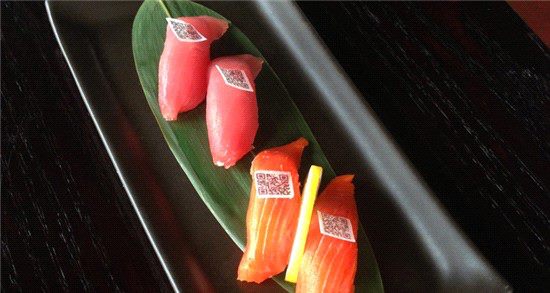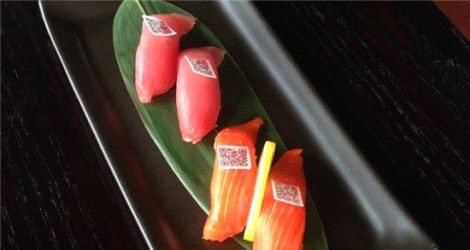Don’t look now, but your sushi may not be what it claims. The stuff being sold to you as “white tuna,” for instance, might be a type of mackerel that causes dysentery. High-mercury tilefish could be masquerading as snapper. The minced fish in your Spicy Whatever Roll could be god knows what. If only we could institute some kind of Orwellian fish dystopia, where all fish would be required to sport an ID displaying its vital statistics.
That’s where executive sushi chef Rob Ruiz comes in. Ruiz, who works at Harney Sushi in San Diego, has devised an edible rice-paper QR code that can be perched atop a piece of sushi, where it will show data about your fish’s sustainability and provenance (including video of the fishermen who caught it!) right until the time you pop it in your mouth. A little Portlandia? Sure. But given the state of fish fraud — especially in California — you actually need to know your sushi’s background to be sure it’s safe.
Soon every type of fish will have its own code. And customers are showing that they appreciate the transparency — sashimi sales have doubled. Once you can also scan a code to find out whether your fish had a happy childhood and what it did in its spare time, we expect them to go through the roof.




